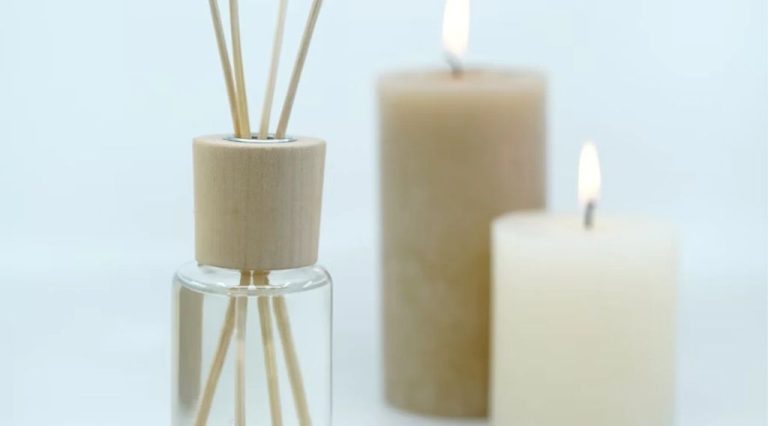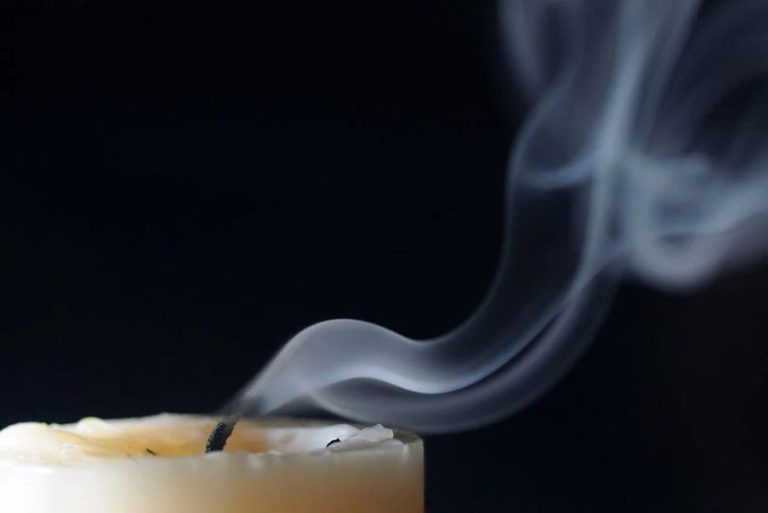Why Does The Candle Go Off After Burning For Some Time?
Candles rely on a simple but interesting chemical reaction to produce light and heat. The basic components of a candle are wax, a wick, and oxygen. When lit, the wick pulls melted wax up to the flame via capillary action. The wax then combines with oxygen to produce heat, light, carbon dioxide, and water vapor. This process continues until one of the components is fully consumed, causing the flame to go out.
The candle burning process depends on maintaining a careful balance and availability of wax, oxygen, and an ignition source from the wick. If any of these are lacking, the chemical reaction stops and the flame is extinguished. The aim of this article is to provide an overview of why candles eventually stop burning after being lit for a period of time.
Wick
The wick of a candle is a specially designed string that helps draw wax into the flame. Wicks are typically made of braided fabric, like cotton or linen [1]. The fabric strands provide a channel for the liquefied wax to travel up through capillary action. The wick needs to be wide enough to allow wax to travel up effectively, but narrow enough to also curl and maintain a flame on its tip as it burns. Well-designed wicks help regulate the flame and wax burn rate.
Wax
Candles are usually made from either paraffin wax or soy wax. Paraffin wax is a petroleum byproduct made from crude oil refining, while soy wax is made from hydrogenated soybean oil (Archipelago). Both types of wax have different properties that affect how the candle burns.
Paraffin wax is highly refined and produces a candle with excellent scent throw and burn time. It’s also relatively inexpensive. However, paraffin wax produces more soot as it burns and is not from a renewable resource. Soy wax is made from plants so it’s renewable and biodegradable. Soy candles burn cleaner than paraffin with less soot. However, soy wax is softer and can’t hold fragrance as well as paraffin (Morouge).
Many candle makers blend paraffin and soy waxes to optimize burn time, fragrance, and cleanliness. In general, the type of wax impacts the quality and properties of the final candle product.
Oxygen
Oxygen is a key component needed for the candle to burn. Combustion requires fuel, heat and oxygen. When the candle wax melts, it releases hydrocarbon molecules that vaporize and mix with oxygen in the air. This oxygen comes from outside the candle jar and surrounds the wick. According to the Candle Science article, the vaporized wax molecules react with the oxygen to generate energy in the form of light and heat. The chemical reaction also produces water vapor and carbon dioxide as byproducts.
Once the oxygen inside the candle jar is used up by the burning reaction, no more combustion can occur. As the Flame Out experiment shows, putting a jar over a burning candle cuts off the external oxygen supply. This causes the flame to be extinguished once the limited internal oxygen is depleted. Therefore, the presence of oxygen is crucial for sustaining the candle’s flame.
Heat
Heat from the flame is essential for melting the wax so that the candle can keep burning. The flame itself can reach temperatures between 1,400°F to 1,800°F at the very bottom where it meets the wick.
This high temperature melts the wax near the wick and turns it into a liquid. The liquid wax is then drawn up the wick through capillary action and vaporized by the heat of the flame. This vaporized wax acts as the fuel that keeps the flame burning.

The melting point of wax varies, but is typically between 120°F and 170°F. Only the small pool of wax immediately around the wick needs to reach this temperature in order to keep the candle fueled.
Without sufficient heat from the flame to melt the wax into liquid fuel, the flame would quickly burn through the wick and be extinguished due to lack of fuel.
Fuel
The wax is the fuel source for candle flames (Candle making for fun!, https://cmc.marmot.org/Record/.b28813881). As the wax melts from the heat of the flame, it is drawn up the wick through capillary action. The wax travels up the wick until it reaches the flame where it is vaporized into a gas. This vaporized wax sustains the flame as it mixes with oxygen in the air. The type of wax impacts the size and brightness of the flame, as some waxes vaporize at higher temperatures than others. Beeswax, for example, has a higher melting point than paraffin wax, producing a brighter flame. The wax continues fueling the flame as it melts and travels up the wick, until the wax source is depleted.
Vaporization
As the candle burns, the heat melts the solid wax into a liquid which is then drawn up the wick. This liquid wax is vaporized by the flame at the tip of the wick, turning it from a liquid into a hot wax vapor. The heat provided by the flame causes the hydrocarbons that make up the wax to transition from a liquid state into a gaseous state through vaporization. This vaporization of the liquid fuel into a gaseous fuel then allows for combustion.
According to research, “Again, the melting phase change was shown with ice and candle wax, vaporization was shown when the melted wax transitioned to a gas/vapor as the candle burned” (source). The process of vaporization turns the liquid wax into a vapor that can mix with oxygen and sustain the flame through combustion.
Combustion
Once the wax reaches its vaporization temperature, the wax vapors combine with oxygen in the air to produce a flame through the process of combustion. Combustion occurs when the vapors react with oxygen, generating heat and producing water vapor and carbon dioxide as byproducts.
The heat generated by the flame vaporizes more of the liquid wax which feeds the flame and keeps the candle burning. The flame provides the activation energy needed to initiate the combustion reaction between the hydrocarbon fuel (vaporized wax) and oxygen. As long as there is enough heat, fuel, and oxygen, the combustion reaction will be self-sustaining and the candle will remain lit.
The visible part of the flame is produced by small soot particles generated during the incomplete combustion of the wax vapors. The core of the flame is where combustion occurs and is the hottest part of the flame.
The combustion reaction happens continuously as the melted wax is vaporized by the heat of the flame. This vaporized fuel sustains the flame until the wax fuel source is depleted.
(Source: I1-64. Burning Candle – Combustion Process)
Depletion
As the candle burns, the wax pool gradually gets smaller and smaller. This is because the heat from the flame melts the solid wax into liquid wax which is then drawn up through the wick to fuel the flame. The liquid wax gets vaporized and consumed in the combustion reaction with oxygen. So over time, the available amount of solid wax decreases and the wax pool shrinks.
The quality and composition of the wax also plays a role. Some waxes like paraffin tend to burn cleaner while others like soy wax can create more soot and residue. Waxes can deteriorate over time, losing their ability to hold scent and color. Old or low quality waxes may not melt or burn as well. According to this source, most waxes have a 1-2 year shelf life before their properties start to change.
Extinguishing
The flame on a candle will eventually go out when the wax fuel is depleted. As the candle burns, the wax melts and travels up the wick via capillary action. The heat of the flame vapourizes the wax into a flammable gas which sustains the fire. However, once all the wax has melted and turned to gas, there is no more fuel left to vaporize and the flame is extinguished. Blowing on a candle flame accelerates this process by cooling the wick and reducing the heat that vapourizes the wax. With the fuel supply cut off, the candle cannot sustain the combustion reaction and the flame quickly goes out.
Sources:
[1] https://www.thenakedscientists.com/forum/index.php?topic=5718.0
[2] https://stileapp.com/au/library/publishers/stile/compilations/science/584a35d6-b7db-4331-aaaa-0019ea46adb3/preview/13-experiment-putting-out-fire/BtWE






